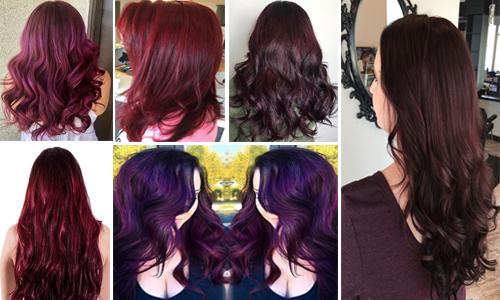10 Ingredients to Avoid in Natural Hair Dye Products
Hair Dye Products have become so common today, and there are plenty of options available in the stores today. With stars and models on the product cover and alluring before and after pics, the hair dyes available in the market never impress us! But are these hair dyes safe enough? Are they made with clinically tested ingredients and hypoallergenic substances? What goes into the making of these products?
Here, we have tried to list the top 10 Ingredients to Avoid in Natural Hair Dye Products, but there are many more that goes into the making of synthetic hair color shampoo. If you had been of the notion that these chemical-laden hair color shampoos can cause mild rashes and redness of the skin, their effects do not stop there. Most of the ingredients are carcinogenic and cause life-threatening diseases like cancer and several other hormonal problems that can significantly affect your lifestyle by leaps and bound.
10 Ingredients to Avoid in Natural Hair Dye Products
Sulfates:
The most common sulfates used in hair color shampoo are Ammonium Lauryl Sulfate or Sodium Laureth Sulfate (SLES) and Sodium Lauryl Sulfate (SLS). Sulfates are potent detergents that function by binding to the sebum on our scalp and water in a chemical process. Sulfates are usually added for their cleansing and lathering properties. They can, however, damage hair, make it brittle, and cause frizz while cleansing. In addition, they strip off all the natural oils in the hair and can cause havoc on the hair follicles.
Parabens:
Parabens are xenoestrogens, which means they function like estrogen in the body and are one of the most harmful ingredients in hair colour products. Parabens are estrogen-like chemicals that have been related to enhanced breast cancer cell proliferation. They are used as a preservative in cosmetics and shampoos to prevent bacteria from forming. Look for propylparaben, benzylparaben, methylparaben, or butylparaben in the hair dye product’s ingredients list that you have decided to buy, and should you find one, stay away from that product. Parabens can harm your hair by drying it out, itching your scalp, fading your colour, and even causing hair loss.
Sodium chloride:
Salt is also known as sodium chloride. The use of sodium chloride in shampoo and conditioner is to thicken the consistency. However, salt can irritate and dry up an already sensitive scalp, resulting in hair loss. The colour of your hair will also be affected by sodium chloride, and the strands will be dehydrated. This component will not help people who had keratin treatments because it will reverse the effects. Hence, sodium chloride is one of the key ingredients to avoid in hair colour if you are undergoing keratin treatments.
Formaldehyde
Most hair coloring shampoos contain formaldehyde-releasing preservatives such as quaternium-15, diazolidinyl urea, DMDM hydantoin, bronopol, or imidazolidinyl urea. DNA damage and cancer have both been linked to formaldehyde. Hair loss and scalp irritation are the most common symptoms people face when using hair products with formaldehyde. It is most hazardous when breathed, and it can be absorbed via the skin in liquid form.
Polyethylene Glycols (PEG)
PEG is a petroleum-based thickening agent that is usually contaminated with byproducts. Although PEGs are not as toxic as the other ingredients of shampoos like parabens, sulfates, and formaldehyde, the PEG byproducts can be detrimental to one’s health. It can also irritate the eyes, nose, and throat when used directly on the skin.
Synthetic Fragrances:
When people use fragranced cosmetic compounds, they become more vulnerable to diseases like cancer or asthma. The synthetic compounds in the fragrances can also irritate the skin and cause hair loss by irritating the skin and scalp. Fragrances contain various endocrine disrupting chemicals (EDCs) and are considsered one of the world’s five worst allergens.
Dimethicone
Dimethicone is a form of silicone found in many hair care products. They make the ingredients of the hair colour shampoo build up on your scalp and, in turn, make your hair greasy and sticky. This thick layer of dirt and residue build-up clogs the pores, makes your scalp deprived of moisture and nutrients and makes it more prone to hair fall and hair damage. Dimethicone finds its place in the list of top 10 Ingredients must be avoided in hair because of its harmful effects on skin and hair.
Cocamidopropyl Betaine
Cocamidopropyl Betaine is another widespread ingredient that is used extensively in most hair and skincare products as an emulsifier, cleansing agent, and foam booster ingredient. Unfortunately, direct exposure to Cocamidopropyl betaine or 3-(dimethylamino) propylamine makes a person highly susceptible to contact dermatitis. Other side effects are skin irritation, allergies, rosacea, and eczema.
Triclosan:
Triclosan is added to hair care products to prevent or inhibit bacterial contamination. However, because of the powerful anti-bacterial properties of Triclosan, repeated exposure to heavy doses of the chemical makes bacteria resistant to antibiotics. In addition, Triclosan has been linked to hormone disturbances, cancer, and this hazardous chemical can have a negative impact on prenatal development, among other things.
Retinyl palmitate
Retinyl palmitate, or vitamin A palmitate, is considered a human reproductive toxicant. The potential adverse effects of using this ingredient are increased chances of skin cancer, tumors, lesions, and melanoma. While retinyl palmitate is used as an active chemical ingredient in sunscreen, it is also commonly found in hair color shampoos.
The BottomLine
High time we go cold turkey on using these readily available color your hair and choose vegan and natural hair color shampoos. Choosing a brand like Absolutely Ayur to conceal your greys and regain your natural hair color can go a long in protecting your health and hair. Absolutely Ayur is free from the ingredients mentioned above and is made with the goodness of more than 8 herbs that can nourish your hair, prevent hair fall, and stimulate hair growth – all this while coloring your hair in a uniform tone.

